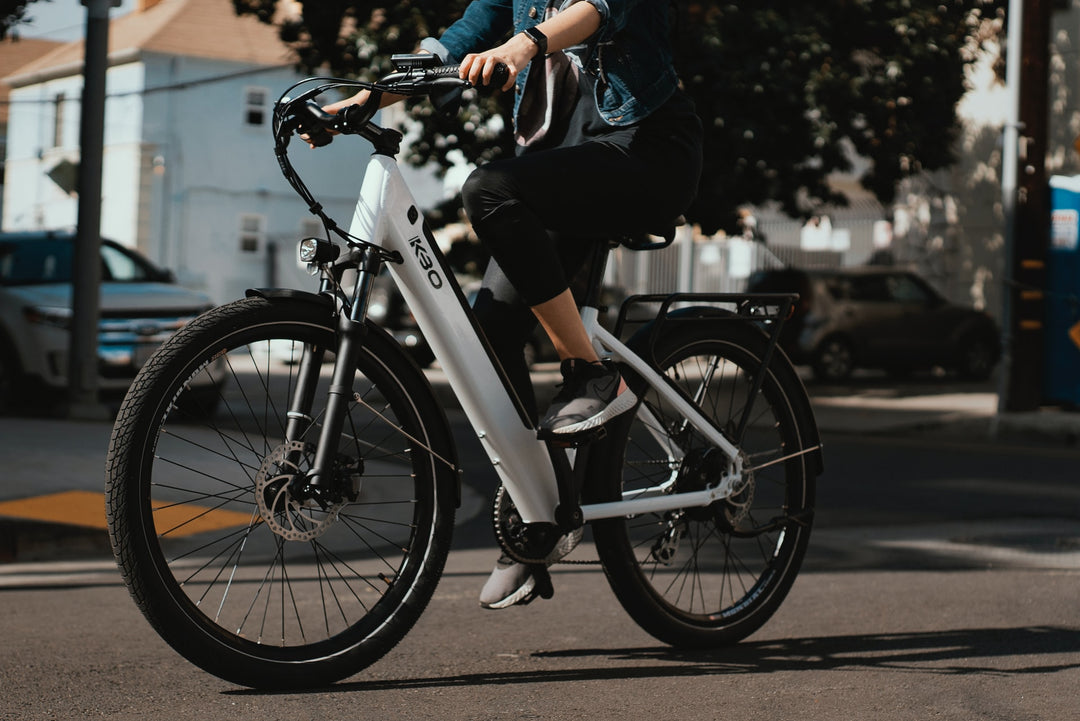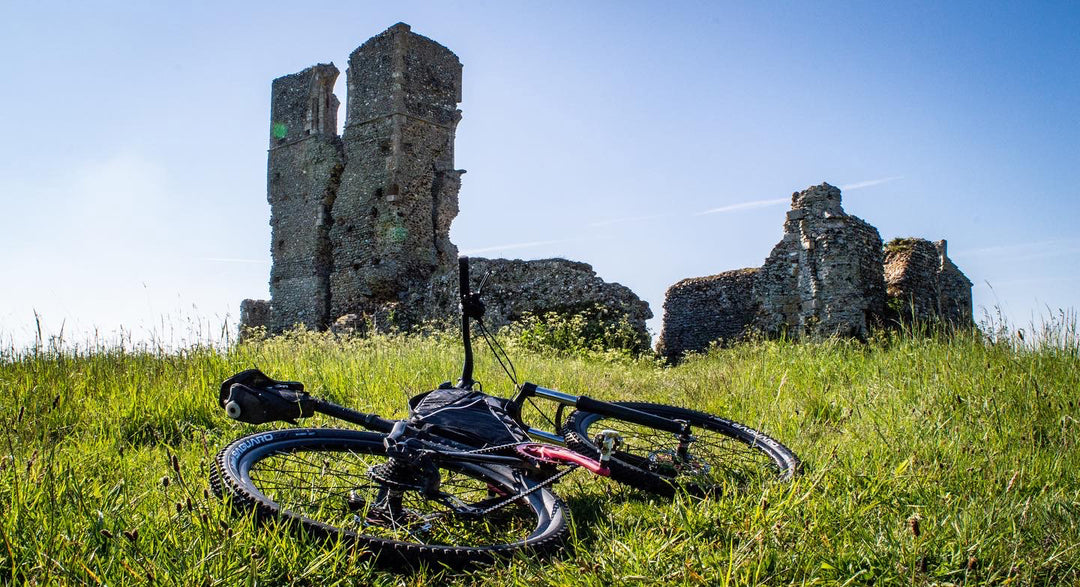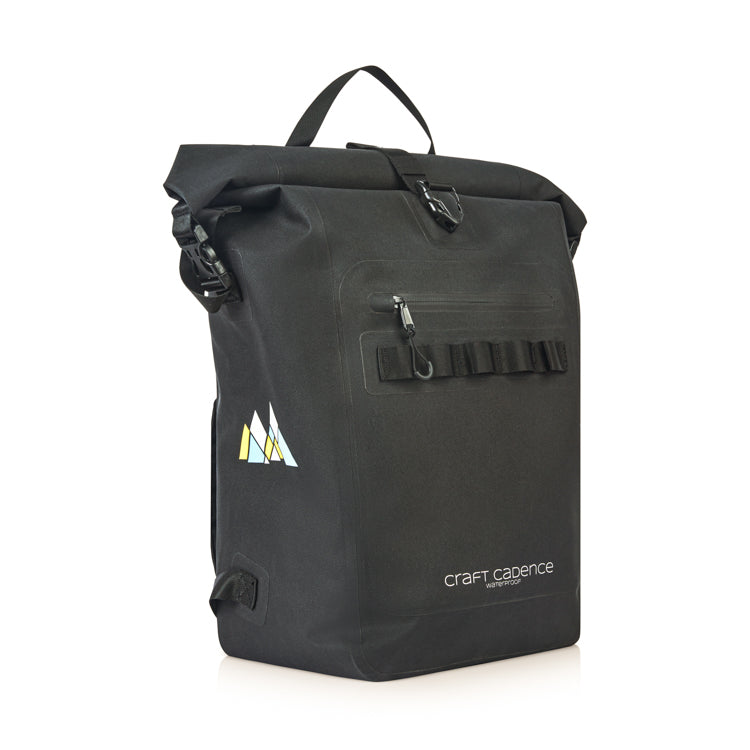Review of backpack solutions to the dreaded 'sweaty back' after cycling
At some stage, all seasoned cyclists have gotten the dreaded sweaty back when cycling to or from work with a backpack on. We know more than anyone how unpleasant it is to arrive at your destination covered in sweat.
So, if you’ve ever wanted the low down on what causes this and how you can go about preventing it – you’ve come to the right place.
Most backpacks for cyclists on the market sit very tight against back and tend to push against your back while riding. Sweat then builds up between the backpack and your back, especially when the weather is on the warmer side. Why? It’s simple: there is no airflow between your back and the bag, and there is no room for the air to escape.

Credit: WeBikeWorld
At Craft Cadence, we’ve spent years developing a backpack that is sweat proof, waterproof and will keep you fresh and dry during your ride.
Designed for commuters, by commuters – our backpack has been developed on the concept that cycling accessories should be an extension of the cyclist: technical, functional and smart.

Learn more here.
Of course, sweat isn’t the end of the world – and sweating is a normal part of everyday life, especially during the summer. However, for commuters that travel daily to work, the level of sweat that can pool up from just one ride is far from the norm. It’s sticky, uncomfortable and often a source of embarrassment. Summer can exacerbate this problem, with the added risk of picking up sore and unsightly skin conditions.
A common problem is heat rash, which occurs when the skin's glands are blocked and sweat cannot evaporate from the skin’s surface. Although heat rash typically fades when the skin is given time to cool, it could see you needing medical treatment if the area becomes infected. Other skin infections or irritations include acne, redness, eczema, and blisters from chafing.
What can we wear to prevent having a sweaty back while riding?
Clothing makes a big difference in how a person sweats. Typically, if a person cycling with a backpack wears heavy clothing. it tends to insulate the skin which in turn creates heat generated by the body. This heat cannot escape, and triggers bodily mechanisms like sweating in an attempt to lower the body temperature.
If you wear a cotton t-shirt on a hot day, you will quickly discover why cycling clothing isn't made from this material. Cycling clothing is made from fabrics such as Nylon/Lycra polyester, and spandex which helps wick away water or sweat from the skin, helping it to evaporate.

Photo by camera_phone_lomo / CC BY
Merino wool is also a fabric that is popular with outdoorsy type people – it absorbs sweat easily and dries relatively fast, while providing a slight cushioning effect between the backpack and your skin for maximum comfort.
With all these types of garments, a mesh undershirt can be an added feature. A typically wide mesh cycling undershirt design helps wick away sweat from the body while creating a second level of airflow between the body and cycling top – whether it be lycra, merino or polyester. These can be used year-round, both during the Summer and in the Winter.
Wearing slightly less clothing when cycling without a backpack can also help to keep the body temperature lower, resulting in reduced sweat.
Backpack positioning
The key to being comfortable using a backpack is adjusting the straps of the backpack before getting on your bicycle. This seems simple, but positioning the straps as needed can evenly distribute the weight between your shoulders – keeping the backpack as high as possible on your back and allowing some air flow to travel underneath or upwards behind the bag.

Credit: zpacks
Our backpack is designed with built-in air vents on padded shoulder straps to reduce moisture.
Plus, the four separate EVA foam pads increases air flow vertically and horizontally, which minimises sweat on the back. And we pay attention to the smallest of details, which is why the hip and sternum strap are both adjustable for maximum comfort.

Securing the waist strap correctly on the backpack also prevents the backpack from shifting significantly while riding. This prevents any chafing or rubbing on your back which is usually the cause of discomfort on longer rides.
Once you have started riding slowly, pay attention to the weight of the backpack shifting as you turn, particularly in how the weight of the bag affects your riding. Again, check if there is any unwanted movement or rubbing against your back and then reposition the bag with the straps.
Packing the heavier items you are carrying at the top of the bag, moves the center of weight to the upper back – creating a channel on the lower back between the bag and back. This allows for some much-needed air flow to the mid to lower back area.
The Ultimate Waterproof Backpack
If you’re just using any cycling backpack, preventing a sweaty back from the backpack itself can be difficult. Sure, using a backpack with an external frame helps keep the backpack some inches from your back – but any rigid and fixed hard frames can cause more problems than it’s worth during a longer ride.
Leading manufacturers of cycling bags have specific designs to increase airflow and reduce sweat. Some use a concave curve design (curving inward) covered with mesh, to help allow the back to breathe easier. And some create a ribbed surface or mesh back panel to help allow air to travel freely. While others use external frames, drawing from the hiking industry.



What is our view? We believe that a sweaty back can best be avoided through a combination of techniques. Firstly, a mesh vent is essential to allow air to pass through the backpack and bag. This is why our backpack is equipped with just that, and more.
Ribbed back panels are also needed to separate the back from the backpack itself. Straps should have air pockets to release air so that the shoulders and upper back stays cool. We are not big fans of external frames or D shaped back panels as they reduce the capacity of the bags and tend to be more uncomfortable.
See below our Cadence cycling backpack, designed with astute attention to detail – all aiming to minimise the dreaded sweaty back. Notice the deep mesh padding and the air channels to enable maximum air flow.

While everyone is different, ventilated backs on backpacks don't necessarily reduce how much we sweat, they simply offer the user more airflow which in turn helps sweat to dry quicker. While some people have the option of using pannier bags to eliminate the sweating issue, these are generally not as convenient as having a backpack you can just slap on when not commuting.
If you are looking for a waterproof backpack for cycling or general use, check out the Craft Cadence backpack for a sweat-minimising experience, whatever the weather.
Get yours here.



